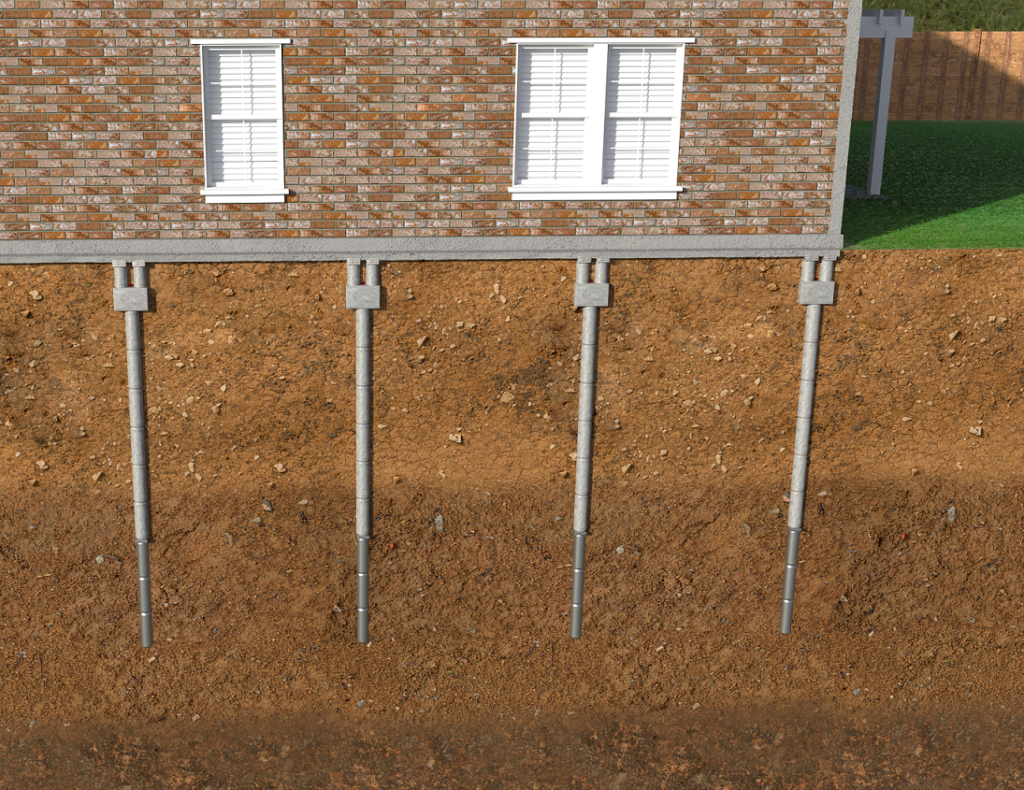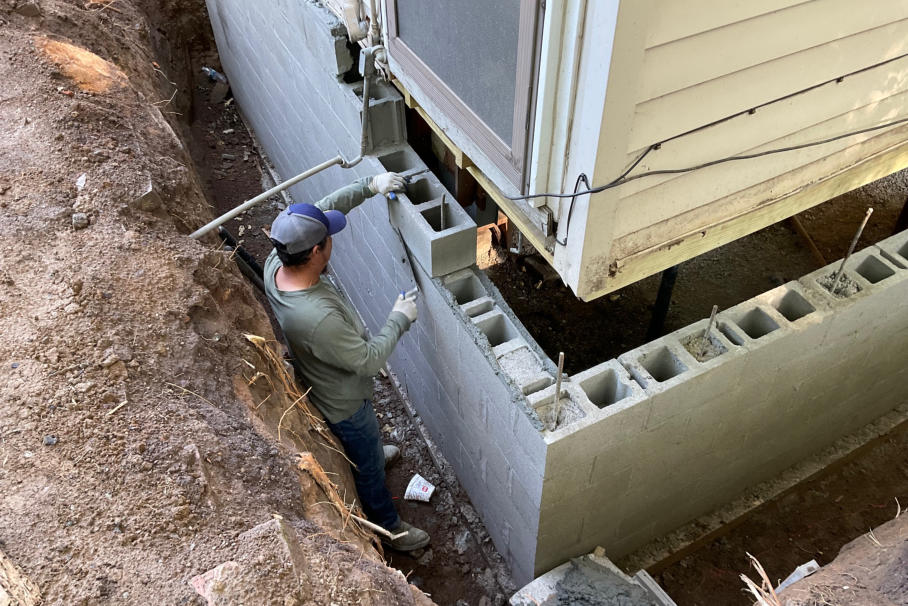Discovering the Conveniences of Timely Foundation Repair Oklahoma for Your Home
Discovering the Conveniences of Timely Foundation Repair Oklahoma for Your Home
Blog Article
Exploring Different Methods of Foundation Repair Work for Different Dirt Types
Foundation repair is an important element of keeping architectural integrity, particularly when thinking about the varied difficulties positioned by different soil types. The complexity of soil habits under differing conditions requires a customized approach to fix, ensuring optimal solutions such as helical piers for unsteady soils or chemical grouts for natural layers.
Understanding Dirt Kinds
Dirt kinds play a critical role in the stability and longevity of building structures, making it necessary for homeowners and building and construction experts to comprehend their qualities and habits. The interaction in between dirt and structure can figure out the architectural integrity of a building. There are a number of soil types, each with distinctive physical residential properties that influence just how structures are designed and maintained.
Granular dirts, such as sand and crushed rock, give good drain and are commonly considered secure. They have high load-bearing capabilities, which can support much heavier frameworks. These dirts can move if not compressed appropriately, leading to potential negotiation problems. In contrast, cohesive soils like silts and clays exhibit various habits. These soils often tend to keep wetness, and their load-bearing capacity can differ dramatically with adjustments in dampness material.
Rocky dirts, understood for their toughness and security, offer exceptional assistance for foundations yet may need specific tools for excavation. Conversely, fertile dirts, which are a well balanced blend of silt, clay, and sand, often provide positive problems for foundation assistance as a result of their moderate water drainage homes.

Understanding these dirt kinds is vital for picking suitable foundation fixing methods, ensuring the durability and security of frameworks in time.
Difficulties With Large Clay
Amongst the numerous soil types, extensive clay presents special challenges for structure security as a result of its propensity to undergo considerable volume modifications with moisture variant. This kind of soil swells when wet and contracts when dry, which can put in considerable stress on frameworks. These variations can result in foundation breaking, heaving, and settlement issues, positioning significant dangers to the architectural stability of structures.
The challenges with large clay are worsened by its plasticity index, which gauges the soil's capability to transform form and volume. A high plasticity index suggests better potential for motion, boosting the chance of damage to foundations. This is specifically bothersome in areas experiencing frequent or severe weather adjustments, where cycles of wet and completely dry conditions are usual.
In addition, the depth of expansive clay layers can differ, making complex the analysis and preparation of suitable structure repair service approaches. The unpredictable nature of its movement demands specialized engineering remedies to reduce threats. Additionally, expansive clay can affect utility driveways, lines, and walkways, additionally making complex repair efforts. These intricacies need a comprehensive geotechnical analysis to make sure reliable structure repair strategies are applied, highlighting the importance of addressing large clay difficulties with competence and treatment.
Solutions for Sandy Soils
Sandy soils, identified by their big fragment dimension and reduced communication, existing distinctive obstacles for foundation security due to their tendency for moving and erosion. By anchoring the structure to much deeper, more steady dirt his response layers, these systems can provide the required support to combat the changing nature of sandy soils.
Another suggested method is the application of soil stablizing methods. Chemical grouting, for circumstances, involves infusing a supporting agent into the dirt, which boosts cohesion and reduces permeability. This process assists to solidify the sandy substratum, therefore minimizing the threat of erosion and movement.
Additionally, setting up appropriate drainage systems is essential in sandy soil problems. Ensuring adequate drainage can avoid water buildup around the foundation, which typically intensifies disintegration and soil displacement. Methods such as French drains pipes or surface grading can be utilized to route water away from the building boundary.
Resolving Resolving in Loamy Soils
Fertile soils, known for their balanced mix of clay, silt, and sand, provide a productive base for several structures but can sometimes result in foundation settling due to their special make-up. This well balanced texture gives outstanding drain and nutrient retention, making it perfect for farming and landscaping. Nonetheless, this exact same feature can come to be troublesome for structures, as changes in wetness material can cause the dirt to increase or contract, causing working out.
Precise dirt testing is important to establish the particular make-up and moisture material of the loam. Once information is gathered, executing correct water drainage services is important to maintain regular dampness levels, thus minimizing the threat of dirt tightening or growth.

Cutting-edge Repair Work Techniques
In the world of foundation repair, innovative strategies are constantly being developed to resolve the complicated challenges presented by different soil conditions. As dirt types vary dramatically in their structural homes, traditional approaches may not always suffice. The introduction of brand-new modern technologies in structure repair gives more tailored solutions, guaranteeing stability and long life.
One notable innovation is using helical piers, which are particularly effective in unpredictable or expansive soils (foundation repair oklahoma explanation city). These piers are screwed into the ground up until they reach a steady layer of dirt, providing solid assistance for the structure over. This technique decreases disruption and is adaptable to various soil kinds, making it a versatile service
One more cutting-edge technique is the application of polyurethane foam shot. This technique entails injecting high-density polyurethane foam beneath the foundation to fill gaps and support the framework. It is a much less invasive option to traditional support, using fast installment with very little disturbance to the surrounding area.
Additionally, soil stabilization methods, such as using chemical grouts, have acquired grip. These compounds boost soil toughness and minimize leaks in the structure, avoiding check here future moving. Collectively, these innovative repair work methods offer effective services for the diverse difficulties positioned by differing dirt conditions.
Conclusion

Structure repair work is an essential element of preserving architectural honesty, particularly when thinking about the diverse obstacles positioned by various soil kinds (foundation repair Oklahoma). The intricacy of dirt actions under varying problems requires a tailored approach to fix, making sure optimum solutions such as helical piers for unstable dirts or chemical grouts for cohesive layers. By anchoring the structure to much deeper, a lot more secure dirt layers, these systems can give the required assistance to counteract the changing nature of sandy dirts
Foundation repair service needs careful factor to consider of soil types to guarantee stability and longevity. Chemical grouts boost dirt toughness and minimize permeability in cohesive dirts.
Report this page